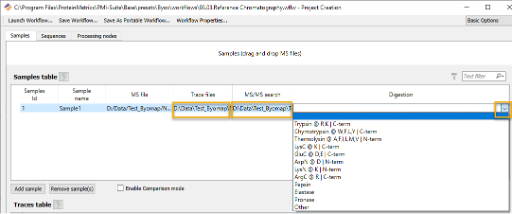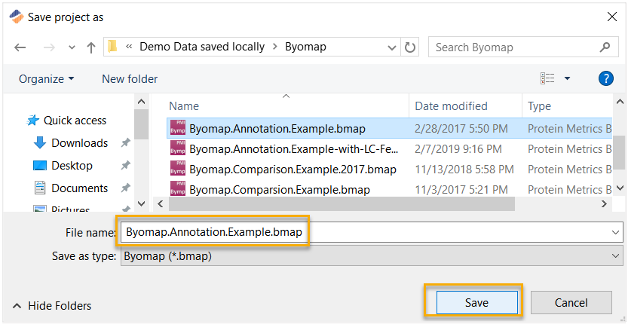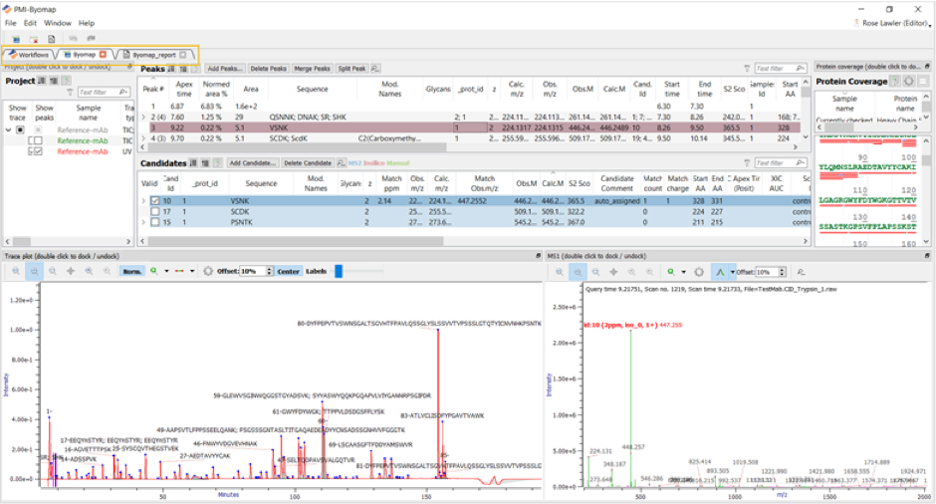Quick Guide to Chromatogram Analysis
Follow this short guide and learn how to get started with chromatography analysis, including reference chromatography, characterization chromatography, reference chromatography (in-silico) and characterization chromatography (in-silico) workflows.
Chromatogram Workflows
Chromatogram Analysis workflows have three separate tabs: Samples, Sequences, and Processing nodes.
Create a Workflow
Click to launch any of the above mentioned workflows. In the figure below, the Reference Chromatography workflow is highlighted.

Drag and drop the sample file(s) to be processed into the Samples tab, as shown in the figure below. These can be from any vendor.

The user can load a Traces file, an MS/MS search result *.byrslt file, and has an option to set the digestion parameters. To load the trace file and MS/MS search result file, click within the box to activate the light blue “…” box, and upload the respective files. For setting the digestion parameter, use the dropdown menu to select the enzyme.

The user can associate traces with samples. To associate traces, click within the box to activate the light blue “…” box, as shown in the figure below.

Drag and drop the FASTA file to be processed into the Sequences tab.

Click Create Project to start analysis and report generation. Please note Byos will save this type of project as a *.bmap file.

The user will be prompted to name and save the analysis file.

Processing will begin. Once complete, the project and associated report will appear as additional tabs after the Workflows tab, as shown in the figure below.

Learn More
Chromatogram & Released Glycans
Commonly asked questions about chromatogram and released glycan workflows
Dynamic Columns
Insights article on dynamic columns, XIC area summed isoX normalized in Byos
Multi-Attribute Method (MAM)
Knowledge Base article on how to use the Multi-Attribute Method (MAM)
Validating Glycopeptide Results
Validating glycopeptide results, MS/MS filtering in Byonic
More Resources

VIDEO SERIESWorking with Chromatogram Workflows
Learn to use chromatogram workflows for peak analysis, adjust baselines, integrate peaks, align traces, and explore glycan analysis.

VIDEO SERIESWorking with Peptide Workflows
Explore peptide workflows, set up searches, interpret scores, validate peptides, manage disulfide mapping, and create reports.

WEBINARIncreasing Analytical Efficiency at a CDMO
Boost analytical efficiency with automation, improving data processing and biopharmaceutical productivity.
